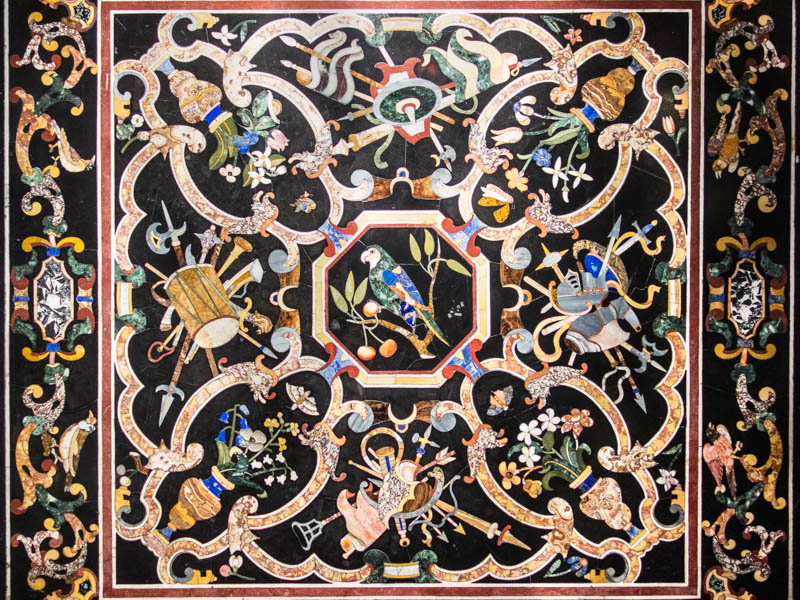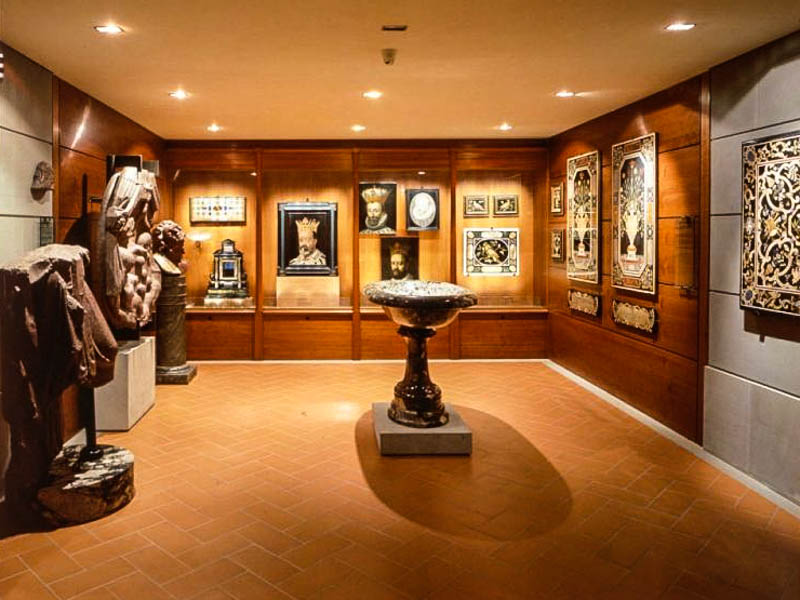

In the 16th century, Florentine craftsmen perfected the art of pietre dure, piecing together cut pieces of precious and semi-precious stones in an inlay process. The Medici founded this institute devoted to the craft in 1588, and it has been in this building since 1796.
Long ago misnamed a "Florentine mosaic" by the tourism industry, this is a highly refined craft in which skilled artisans (artists, really) create scenes and boldly colored intricate designs in everything from cameos and tabletops to never-fade stone "paintings."
Masters are adept at selecting, slicing, and polishing stones so that the natural grain or color gradations in the cross sections will, once cut and laid in the design, become the contours, shading, and molding that give good pietre dure scenes their depth and illusion of three-dimensionality.
The collection in this museum is small, but the pieces are uniformly excellent.
Souvenir shops all over town sell modern pietre dure items—much of it is mass-produced junk, but some very nice. The best contemporary maestro is Ilio de Filippis, whose workshop is called Pitti Mosaici.
(In addiiton to preserving the stone inlay, the OPD is also in charge of most major artistic resotoration projects in Florence—frescoes, sculptures, paintings, and more.)
Via degli Alfani 78
tel. +39-055-265-1348
www.opificio.arti.beniculturali.it
Mon–Sat 8:15am–2pm
€4
Bus: C1; 6, 14, 19, 23 ,31
Hop-on/hop-off: Piazza Libertà Viale Matteotti (C), Libertà (A, B); Independenza (B)
Planning your day: If you cared enough to stop in, you care enough to spend at least 30 minutes here.
Share this page
Search ReidsItaly.com
Via degli Alfani 78
tel. +39-055-265-1348
www.opificiodellepietredure.it
Mon–Sat 8:15am–2pm (Thurs to 7pm)
€4
Bus: C1; 6, 14, 19, 23 ,31
Hop-on/hop-off: Piazza Libertà Viale Matteotti (C), Libertà (A, B); Independenza (B)